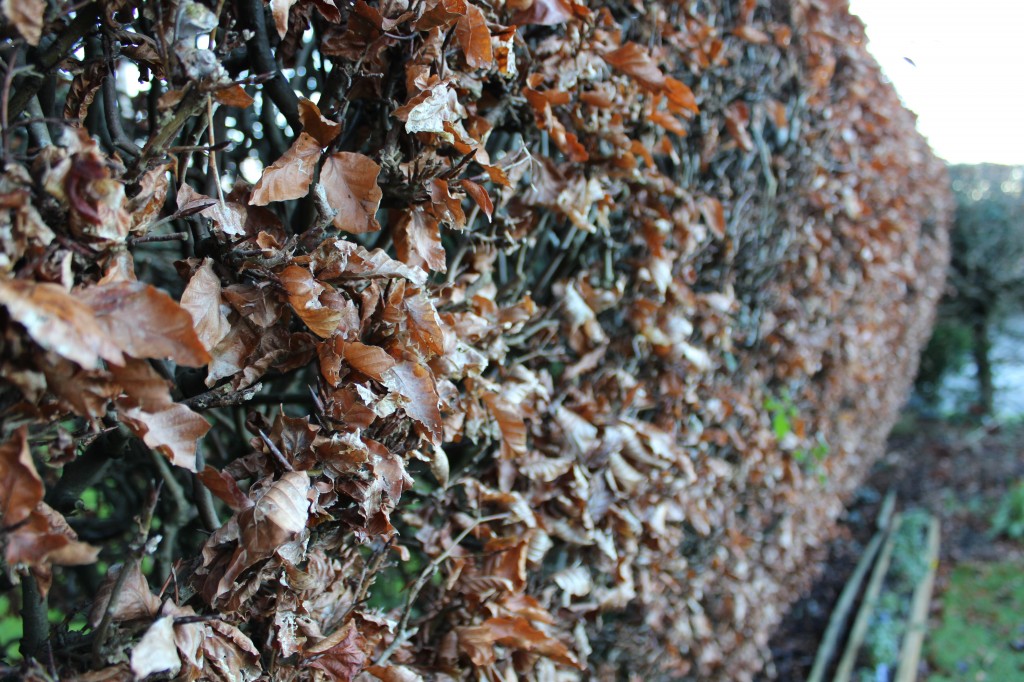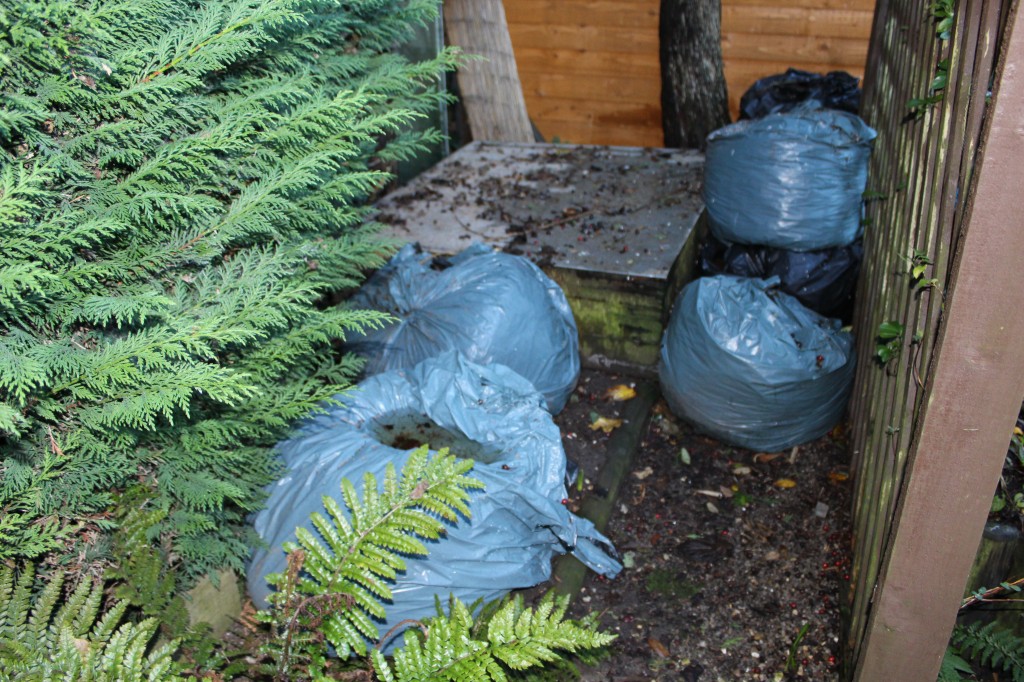Over the past couple of days, blustery winds (reaching speeds of over 100 mph in some places) have wreaked havoc, bringing down roof tiles, power lines and trees. Those same winds have also made a lot more leaves available to gardeners around the country. Even the beech hedge in my front garden, which always hangs on to its crispy curled russet glory well into the Spring, has begun to loosen its grip a little.
So why do gardeners get so excited about fallen leaves? The answer: free soil conditioner! Beech leaves (as well as oak, alder and hornbeam) break down pretty easily and produce a good quality leaf mould; sycamore and horse chestnut, for example, take a little longer. Leaf mould greatly improves the structure and water-holding capacity of the soil, and provides the perfect conditions for all the beneficial organisms that dwell there.
Given the dearth of other jobs in the garden at the moment, I actually welcomed 15 minutes of raking. It got me out in the (very) fresh air, away from my desk, and provided me with a surprisingly decent mini workout. After 15 minutes I had produced a neat pile of soggy leaves ready to be be bagged and stored until the autumn.
How to make leaf mould
Simply put the leaves in a bin bag, moisten them if dry and stab a couple of holes in the bottom for drainage. Then loosely tie up the top of the bags and store out of sight in a shady spot for the rest of the year. Alternatively, if you’ve got plenty of room – and a lot of leaves – then you could build a leaf bin, a simple cage-like structure, with walls comprised of chicken wire, stapled onto stakes hammered into the ground at four corners. Position it somewhere sheltered, so the leaves don’t blow away, and keep it moist.
After 1 year you’ll have a decent leaf mulch to use as a top dressing for the garden in winter. If you’ve got the patience to wait 2 years (unlikely in my case!), then you’ll end up with an even crumblier product that you can use as a soil conditioner, or even as seed-sowing compost.
The downside is that you need the room to hide a load of unsightly bin bags, or to put a bin. I happen to have a shady corner at the bottom of the garden next to one of my compost bins that is hidden by a trellis. If you haven’t got that kind of room, don’t waste your leaves. Add them to your compost instead; they are an excellent source of ‘brown’ material. For more information on ‘greens’ and ‘browns’ see Compost composition.
Happy raking!



